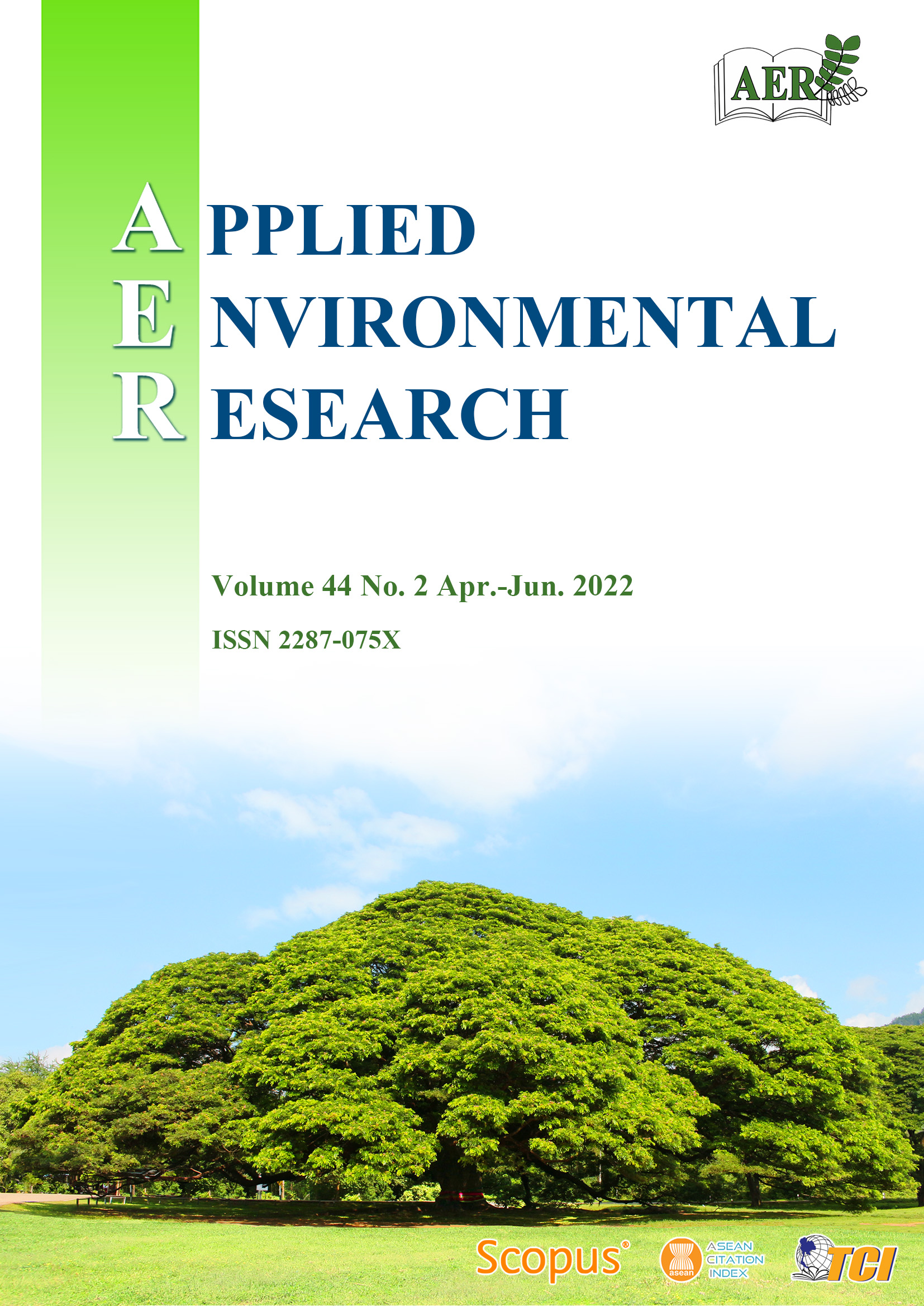Ecological and Human Health Risk Assessment of Heavy Metals by Consuming the Aquatic Plant Species Near an Electronic Waste Open Dumpsite in Thailand
Main Article Content
Abstract
Heavy metals from electronic waste (e-waste) accumulate in the environment and can affect human health. The purpose of this study was to determine As, Cd, Cr and Pb concentrations in water, sediment and three species of edible aquatic plants (Ottelia alismoides, Ipomoea aquatic and Marsilea crenata) near an e-waste open dumpsite. Samples were collected from six sampling points surrounding an e-waste open dumpsite and heavy metal concentrations were analyzed by inductively coupled plasma optical emission spectrometry (ICP-OES). Bioaccumulation factors (BAFs), estimated daily intake (EDI), hazard quotient (HQ), hazard index (HI) and carcinogenic risk (CR) were evaluated in the plants. The Pb concentration in the water samples exceeded the quality standard. The order of the heavy metal concentrations in the sediment was Pb>Cr>As >Cd, and these concentrations were within the limits of the quality standard. The order of the heavy metal concentrations in O. alismoides, I. aquatic and M. crenata was Cr>Pb>As>Cd, Pb>Cr>As>Cd and Pb>Cr>As>Cd, respectively. The concentrations of As, Cd, Cr and Pb in O. alismoides and As, Cr and Pb in I. aquatic and M. crenata exceeded the quality standard of food consumption. Most of the BAF values of the heavy metals in O. alismoides were more than one, but in I. aquatic and M. crenata, they were less than one. The order of the EDI values in O. alismoides, I. aquatic and M. crenata was Cr>Pb>As>Cd, Pb>Cr>As>Cd and Cr>As>Pb >Cd, respectively. The HQ values were greater than one for As, Cd and Pb in O. alismoides; Pb in I. aquatic; and As and Pb in M. crenata. The HQ and CR values show that the consumption of edible plants from an e-waste open dumpsite is a human health risk.
Article Details

This work is licensed under a Creative Commons Attribution-NonCommercial 4.0 International License.
Published articles are under the copyright of the Applied Environmental Research effective when the article is accepted for publication thus granting Applied Environmental Research all rights for the work so that both parties may be protected from the consequences of unauthorized use. Partially or totally publication of an article elsewhere is possible only after the consent from the editors.

